Plate dies are used for profile extrusion and are created by assembling a series of plates that form the negative volume through which the polymer melt flows to form the final shape. Since the negative volume is formed by a series of plates bolted together, it is possible to automate the meshing and the model setup process for these dies. The purpose of the Plate Meshing Wizard is to achieve this automation.
The model files for this tutorial are located in the file mfs-1.zip in the subdirectory \hx\MetalExtrusion\HX_1153. See Accessing Model Files.
To work on this tutorial, it is recommended that you copy this folder to your local hard drive where you store your HyperXtrude data, for example, “C:\Users\HyperXtrude\” on a Windows machine. This will enable you to edit and modify these files without affecting the original data. In addition, it is best to keep the data on a local disk attached to the machine to improve the I/O performance of the software.
| • | Tutorial file - you will start from this file: |
- HX_1153.hm
| • | Completed files provided for reference: |
- HX_1153_completed.hm
|
| 1. | From the Start menu select: All Programs > Altair > HyperXtrude to launch the HyperXtrude User Interface. The User Profiles window appears with Manufacturing Solutions as the default application and HyperXtrude selected. |
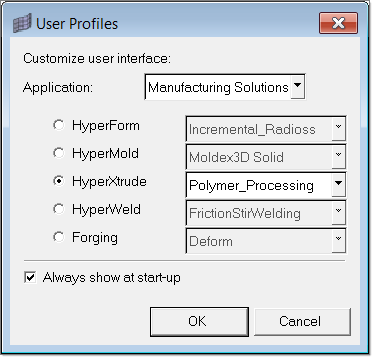
| 2. | Select Polymer_Processing from the drop down menu of HyperXtrude. |
|
| 1. | From the File menu, click Open. |
| 2. | Browse to the file HX_1153.hm. This file contains the solid geometry and default unit selections. |
| 4. | Inspect the model. There are seven components in the model, named Manifold0 - Manifold6. |
Manifold0 corresponds to the inlet manifold, and Manifold6 corresponds to the land. There is no solid corresponding to the profile and it is automatically created.
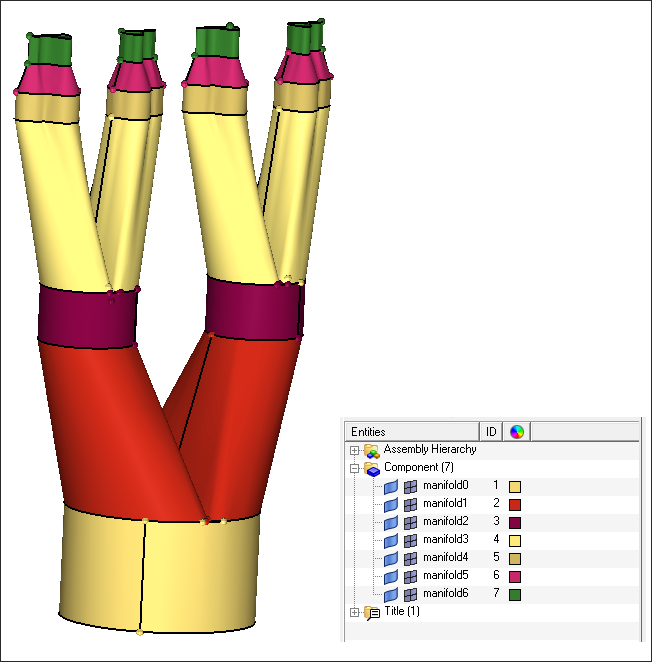
|
| 1. | From the Utility menu, click Plate Meshing Wizard. The Project Browser appears. |
| 2. | Select the folder in which you want to create the new project. |
| 3. | Right-click and select New Project. Enter the name for the new project (Ex. HX_1153) and press ENTER. A new project with the specified name (Ex. HX_1153) will be created. |
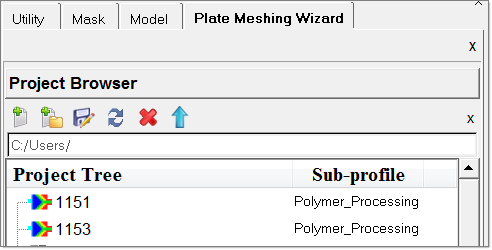
| 4. | Right click on the project you just created in the previous step. Browse to select the .hm file which you want to associate with this new project (In this case, the file you have opened in Step 2. i.e. HX_1153.hm). |
The model will be loaded into the Project browser. A new run will be created and the Plate Meshing Wizard analysis steps will appear as shown below:
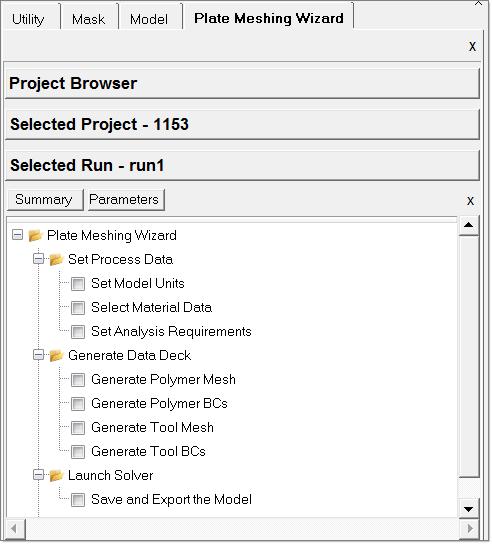
|
| 1. | Under Set Process Data, click Set Model Units. |
| 2. | Select the units as shown in the image below: |

| 3. | Click OK to close the dialog. |
You can mix SI and British units. HyperXtrude will convert everything to non-dimensional form when computing the solution.
|
| 1. | Click Select Material Data. |
| 2. | Expand Polymers, then expand PVC. |
| 3. | Select PVC_Generic and click Add to add the material to the Selected materials column. |
| 4. | Click Close to close the Select and Assign Material from Database window. |
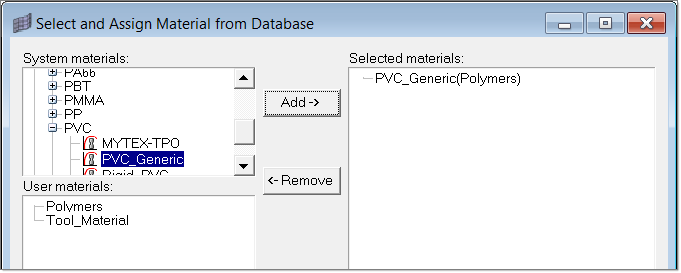
|
| 1. | Click Set Analysis Requirements. A series of options are shown to specify the model information. |
| 2. | Refer to the image below to set the first options: |
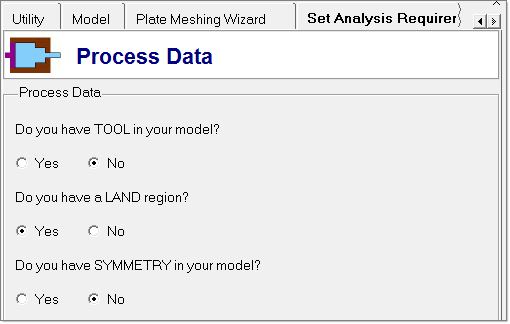
| 3. | Click Next and select the options shown in the image below. You are solving this model under steady-state and are considering heat transfer in the analysis. |
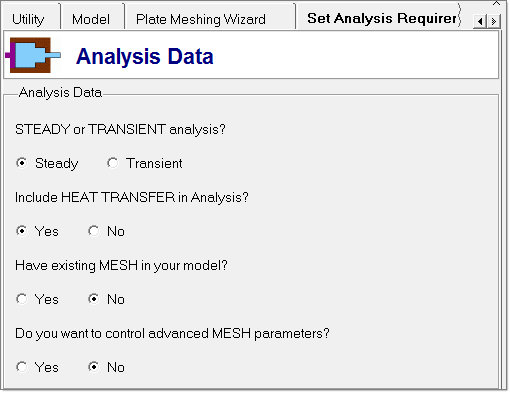
| 4. | Click Next to open the component selection window. Select all the components by holding the CTRL key. With all of them still selected, right click and select Add to Layer 1 components as shown below. |
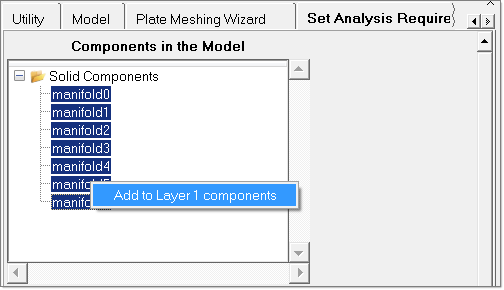
| 5. | All the components appear in the Model Layers window. Right-click on Components for Layer 1 and select Add to PVC_Generic as shown below. PVC_Generic will appear in the Materials Selected window. |
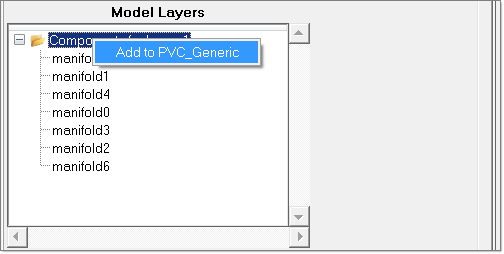
| 6. | Click Next to open the Set Analysis Requirements tab. |
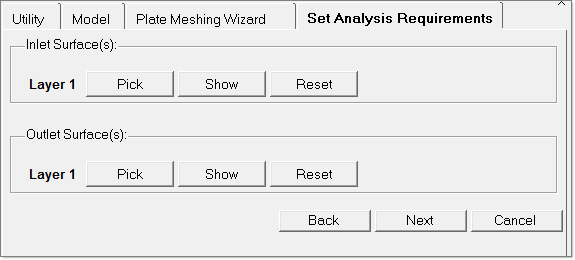
| 7. | For Layer 1, click on Pick and select the inlet surface. |
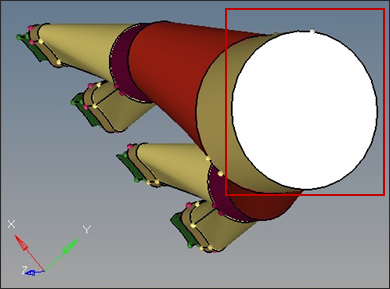
| 8. | For the Outlet Surfaces Layer 1, click on the Pick and select the 4 outlet surfaces. |
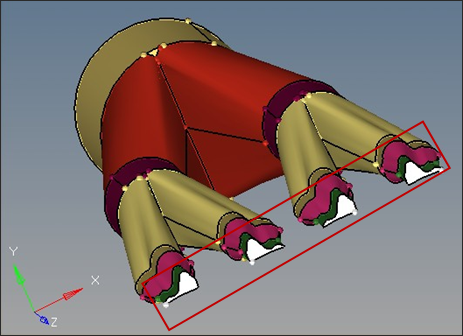
| 9. | Click proceed. After the successful selection, the Pick buttons turn green. |
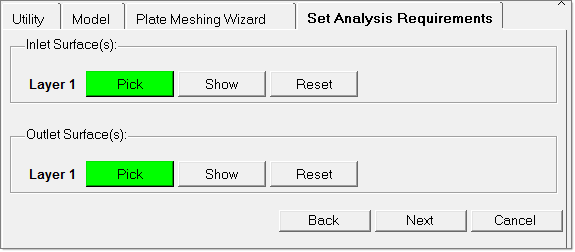
| 11. | Accept the default settings in the window below and click OK to proceed for meshing. |
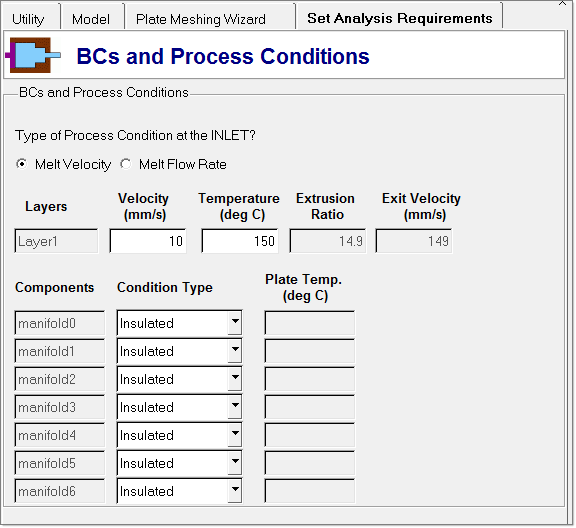
| 12. | Click OK to close the Set Analysis Requirements tab. |
|
| 1. | Click Generate Polymer Mesh. The Plate Meshing Wizard automatically detects and renames the component collectors for the extrusion components. |
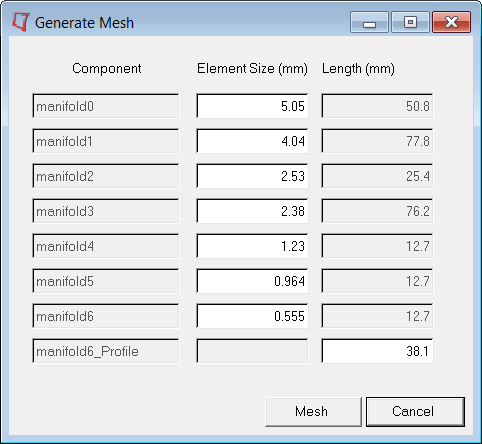
| 2. | Click Mesh, and then click OK. |
This creates a tetrahedral mesh in all components except the Land and Profile regions. In these regions, it creates prism elements.
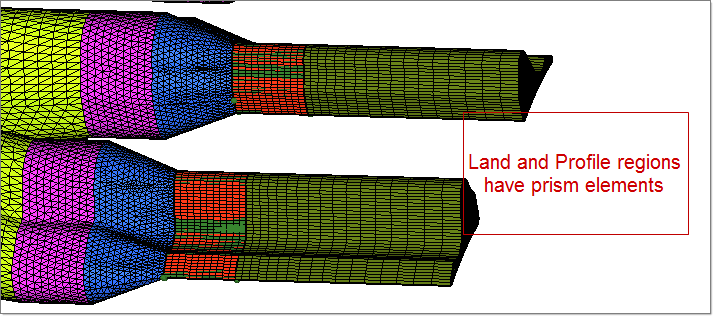
|
| 1. | Click on Generate Polymer BCs. This will generate the boundary conditions for the entire model. |
|
| 1. | Click on Summary at the top of the tab to inspect the model summary. Select the Element Statistics tab. |
| 2. | Click on Show Element Quality. This displays whether the elements passed the quality checks or not, as shown in the table below: |
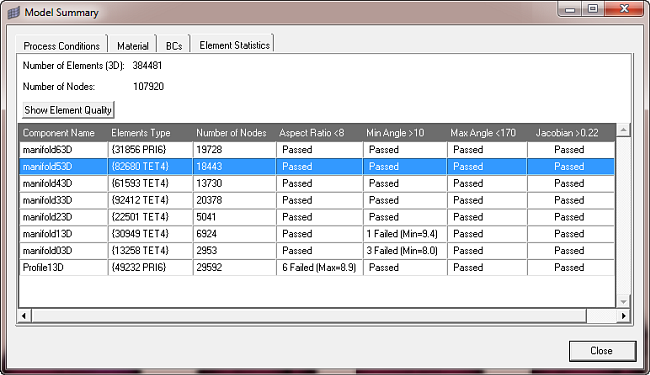
| 3. | Click on Parameters. Click on the User Commands tab and set Footer data as shown in the image below: |
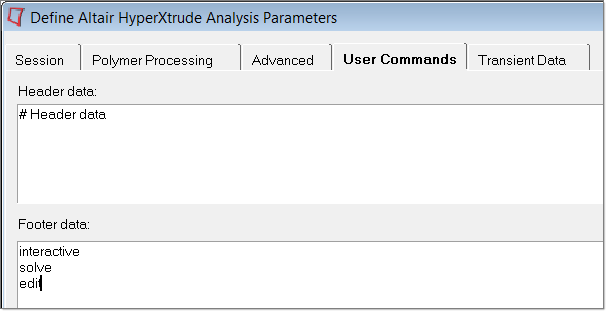
|
| 1. | Under Launch Solver in the Plate Meshing Wizard, select Save and Export the Model. The following dialog launches: |
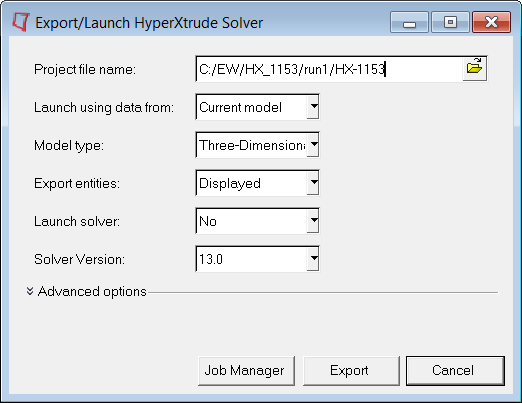
| 2. | Make sure the correct file is selected as the Project file name and click Export to export the model. If you set the Launch solver field to interactive, you can solve the model interactively. On the other hand, if you set it to No, you should have the commands solve and exit established in the User Commands tab under Parameters to submit the job on the remote machine. |
This concludes the tutorial. For your reference, the tutorial directory includes the completed model file. You can learn more about post-processing in the post-processing section of the tutorials.
|
Return to Polymer Processing Tutorials




























